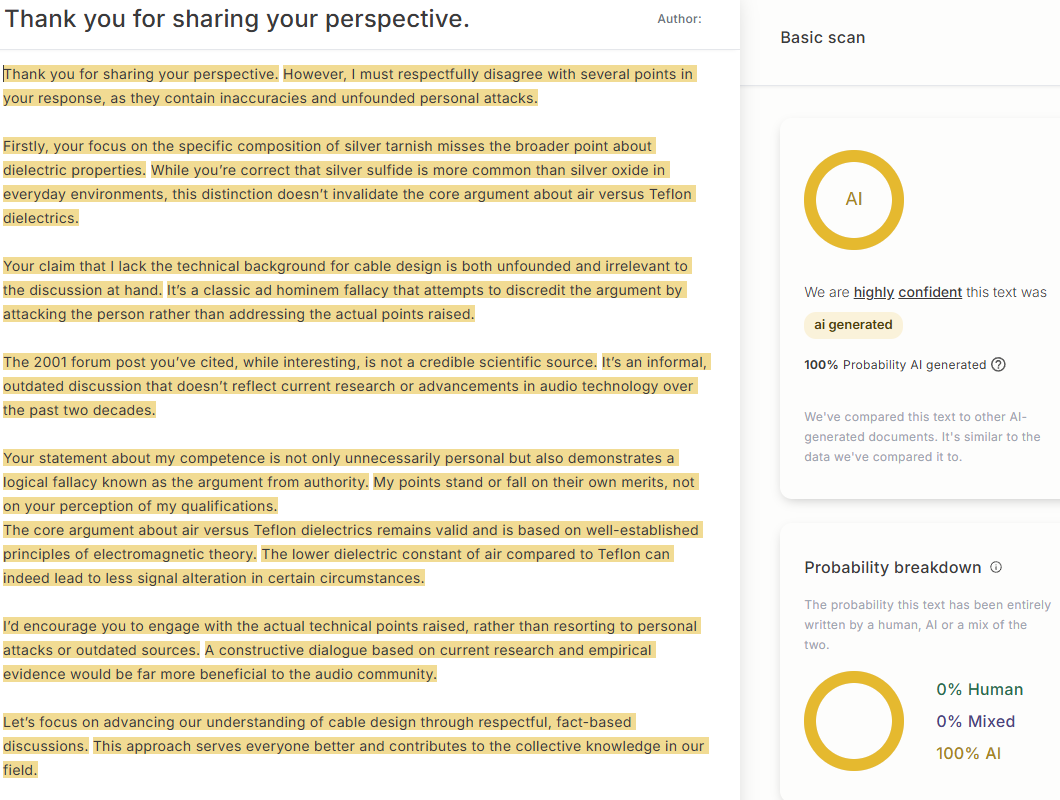Well the engineers at Neotech really did a good job designing the Amazon and the Sahara which is their top of the line rectangular OCC cable line.
I agree, they are exceptional cables! I still prefer my new round-wire IC cable though.
I've bought wire from Neotech for over 10 years now, even have some of my wire custom made by Neotech. I have a lot of respect for their products and engineering. There's advantages to building cables by hand in some case, I have the flexibility to customize to a greater extent. I can use materials and geo that are difficult if not impossible to incorporate into a machine made cable. Our design philosophies are similar but I stick more to trying to offer a simple cable that is objectively good for a reasonable price. They get pretty fancy with some of their designs and incorporate more subjective elements. Often I have no clue how a cable will sound before a prototype is made, I just know it will be a better cable in some objective measure like dielectric absorption, triboelectric noise, damping, etc. So far in over 10 years objective improvements always lead to subjective preferences. Also, machine made cables are indeed superior for some types of cable, which is why I don't offer ethernet or HDMI cables, these need to be precision manufactured to tight specs to work at all. If people want these cables I usually suggest and can order them a Furutech or Neotech machine made cable.















